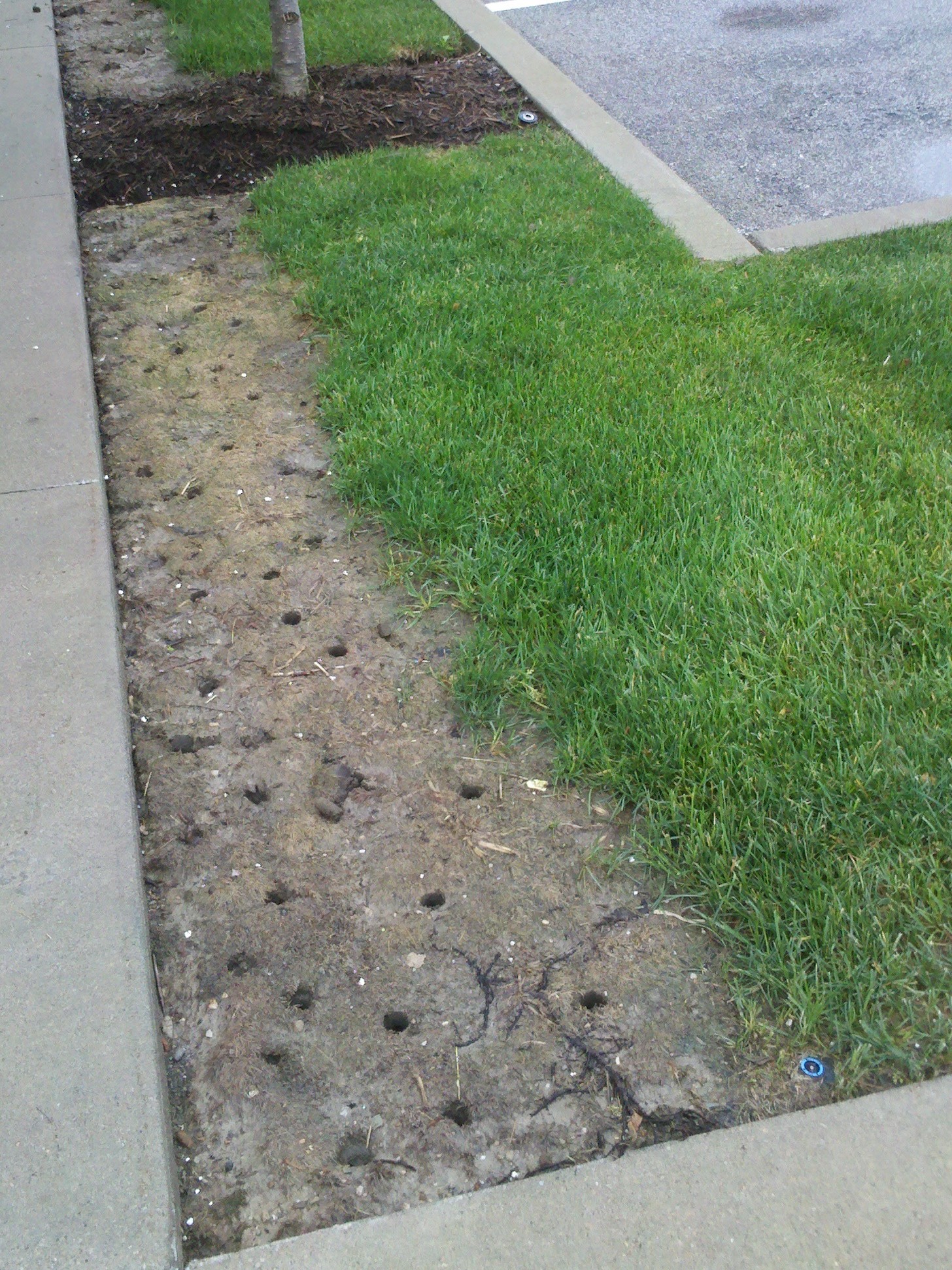Protecting plants and turf from the elements is vital, especially when the snow starts to roll in.
It’s not necessarily the snow that’s going to pose a threat to ornamental beds and turfgrass (although snow mold can be an issue), but the same road salt used to keep pedestrians and motorists safe can be dangerous to turf and ornamentals.
If road salt reaches the soil, it can cause the amounts of sodium and chlorides in the soil to reach harmful—and possibly toxic—levels. This results in an unhealthy and unappealing appearance come spring, and dead trees and turf are not something any property manager wants to have to deal with.
Turf and ornamental beds affected by excess sodium chloride (the main chemical compound found in road salt) have a desiccated, less colorful appearance and less density. Other issues include reduced soil structure, soil dehydration, and reduction of plant-available water and beneficial nutrients, all of which negatively affect appearance and longevity.
Fortunately, there are quite a few easy ways to mitigate the negative effects of salt damage.

Use Aqualock
Aqualock is a wax-like anti-desiccant that forms a thin, flexible, water-repellent layer on surfaces, and it protects ornamentals from wind, cold, ice melt spray, and salt.
While AquaLock protects plants against extreme temperatures and wind, Precision Laboratories, AquaLock’s manufacturer, recommends applying when temperatures are 40°F or above. With cold fronts arriving soon, the earlier you can get it applied, the better.
For ornamentals, apply 4–8 oz in 1 gallon of water and spray to the point of drip.
Pro Tip: We mentioned snow mold earlier, and AquaLock can be added as a tank-mix adjuvant to enhance the efficacy of snow mold fungicides and repellents through its adhesive properties.
Apply Gypsum
Gypsum can serve as another line of defense against salt. The calcium in gypsum essentially allows sodium to leach lower into the soil, mitigating the negative effects of salt accumulation.
To ensure healthy, green turf in the new year, spread some granular gypsum on sidewalks, parking lots, and other areas where salt has the opportunity to reach turf and ornamentals.

You’ll want to apply ten pounds of gypsum per thousand square feet now before the snow starts to fly, and a fast-activating gypsum like Super Cal SO4 is a great choice. After the snow melts in the spring, put down another ten pounds of gypsum per thousand square feet for best results.
To help promote positive growth in the spring, apply 1 oz per thousand square feet of Foliar-Pak Armament Concentrate or 6 oz per thousand square feet of Foliar-Pak Promote before green-up. Then, add 0.75 oz per thousand square feet of Alypso Plus wetting agent to help flush through the soil. Then, repeat the process again 30 days after the initial application.
It’s Time to Prepare
Simply put, AquaLock keeps ornamentals protected, while gypsum keeps the soil sodium-free. By treating sensitive areas where over-application, runoff, or pile-up occur with AquaLock and gypsum, you can help reduce injury to turfgrass and ornamentals.
If you’re ready to add AquaLock and gypsum to your winter arsenal, contact your local Advanced Turf representative, and they’ll get you set up!












